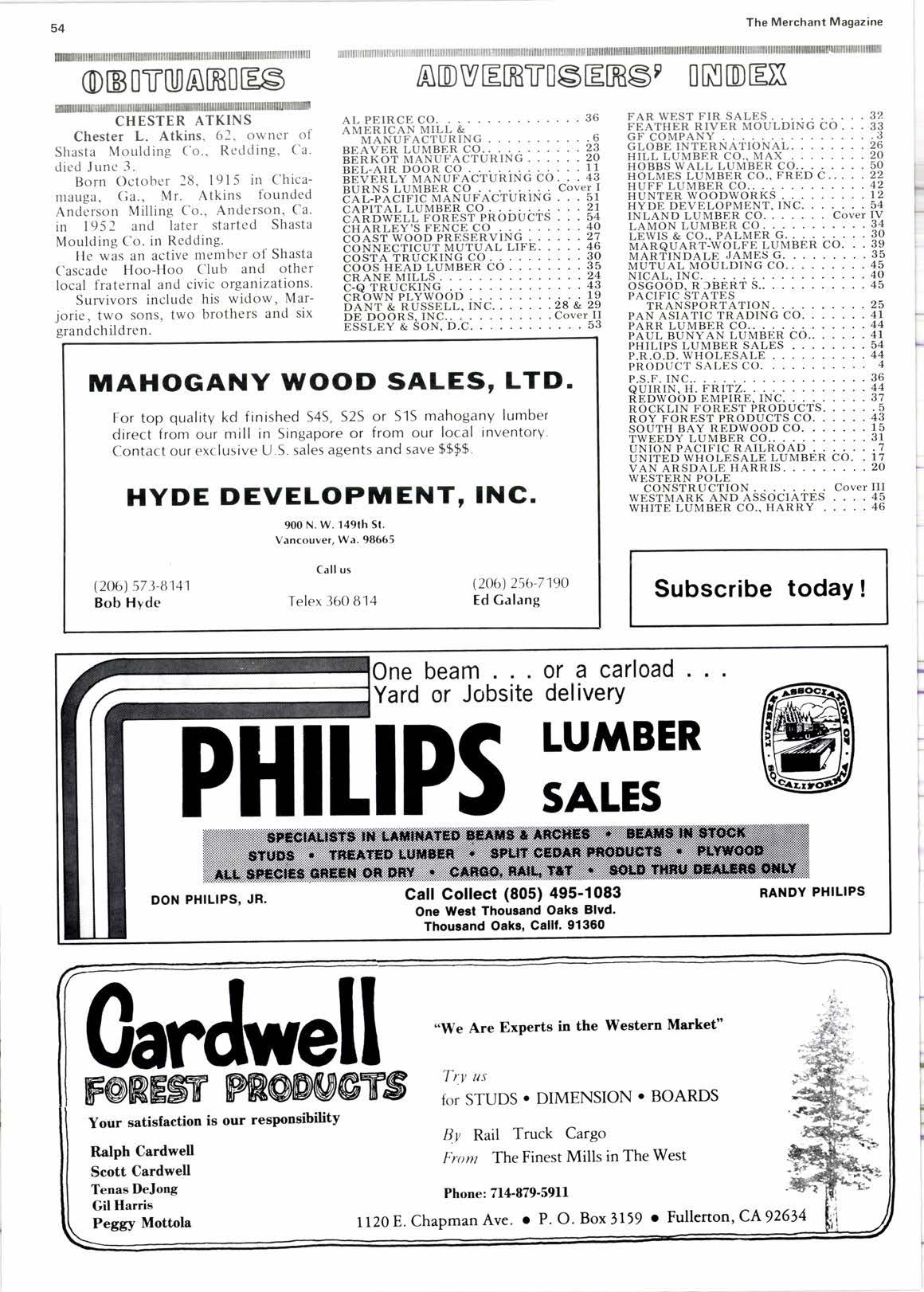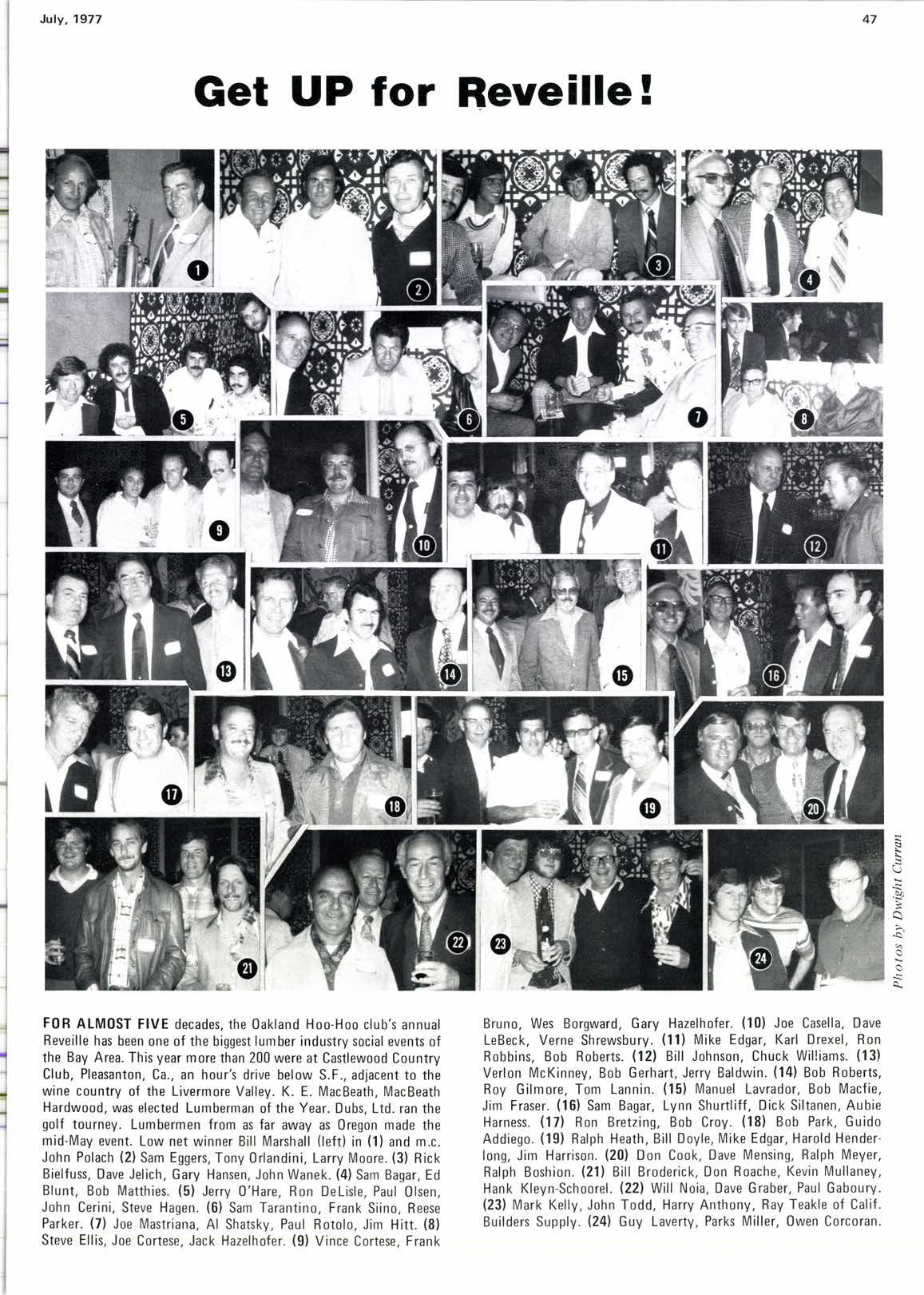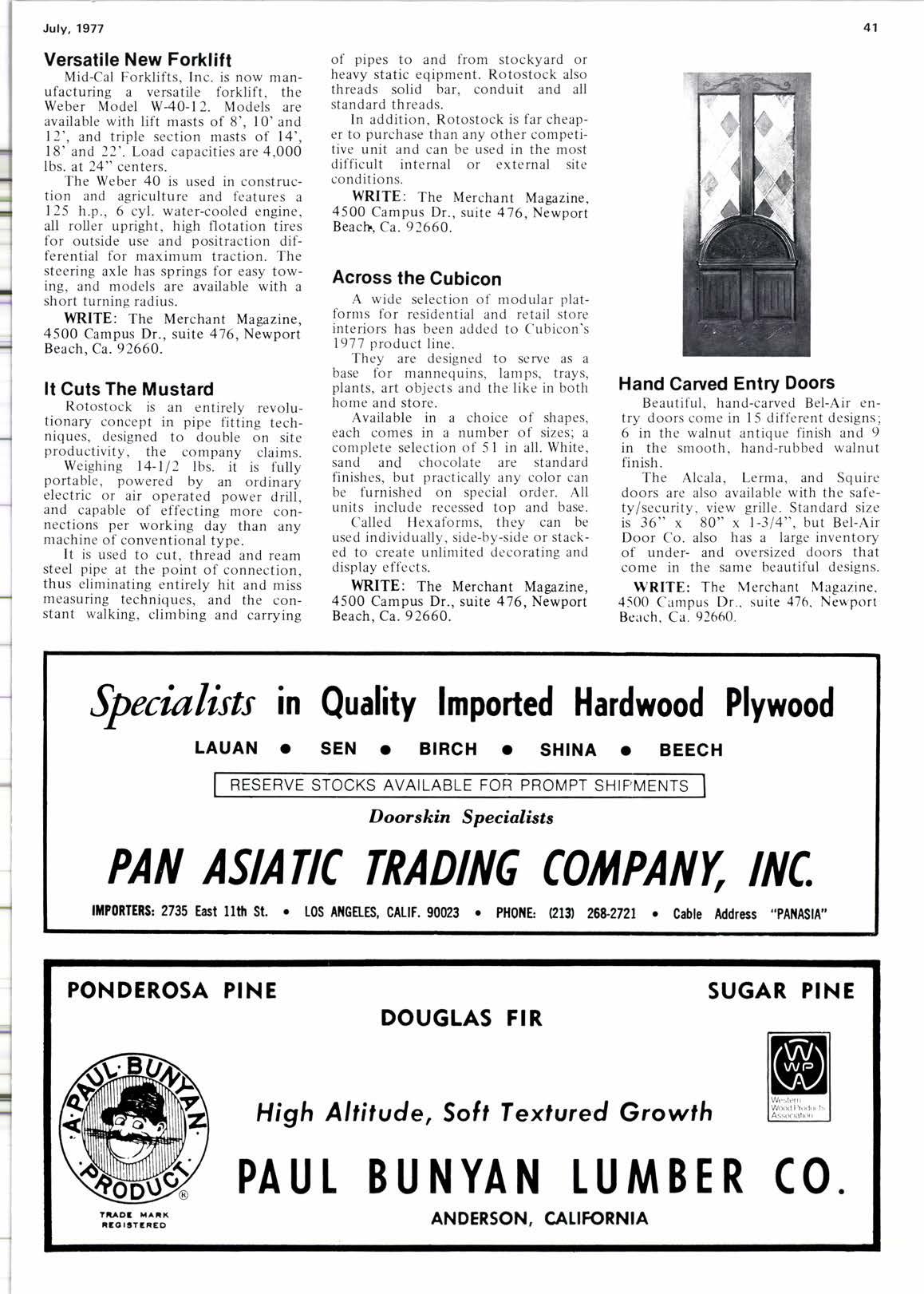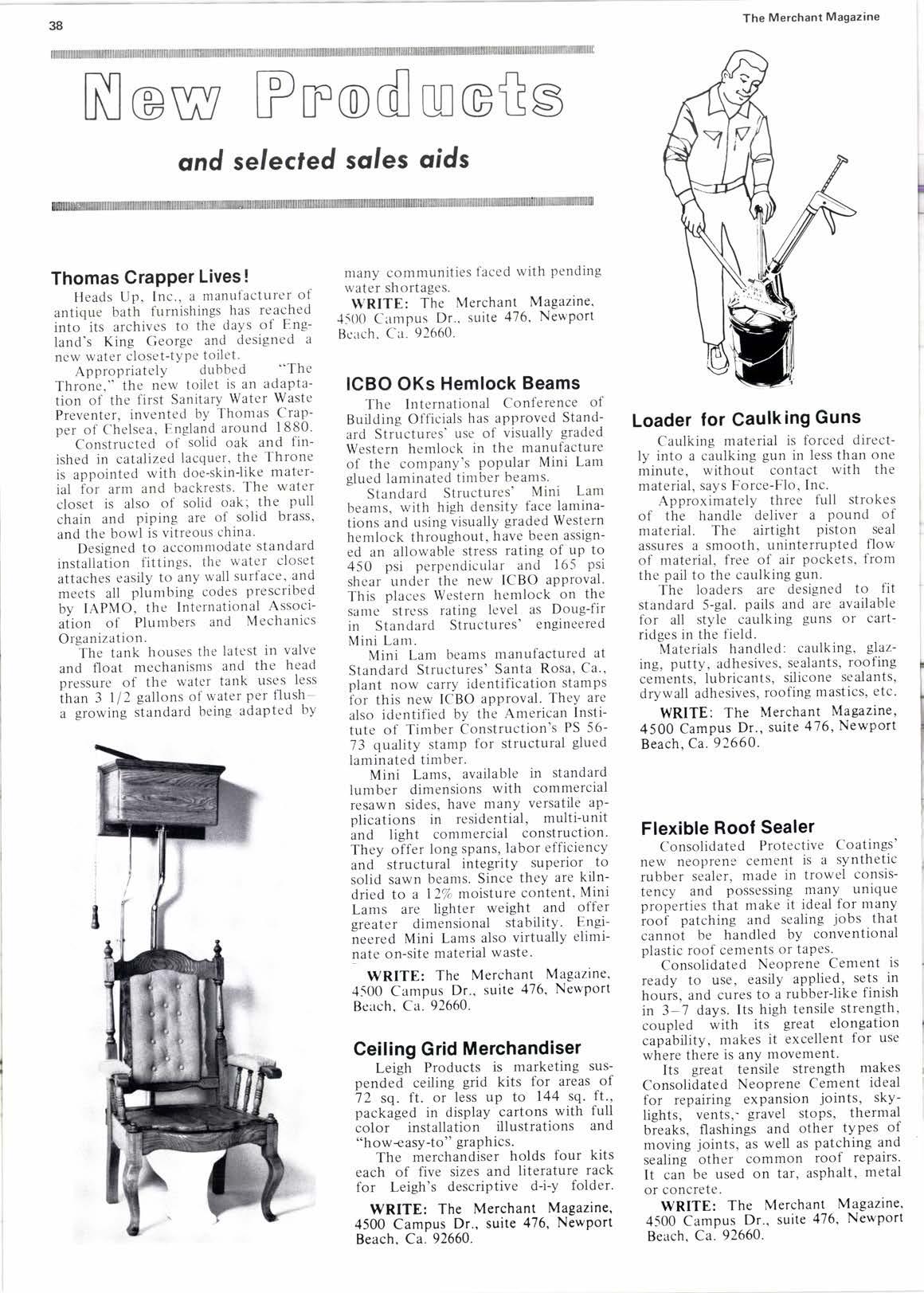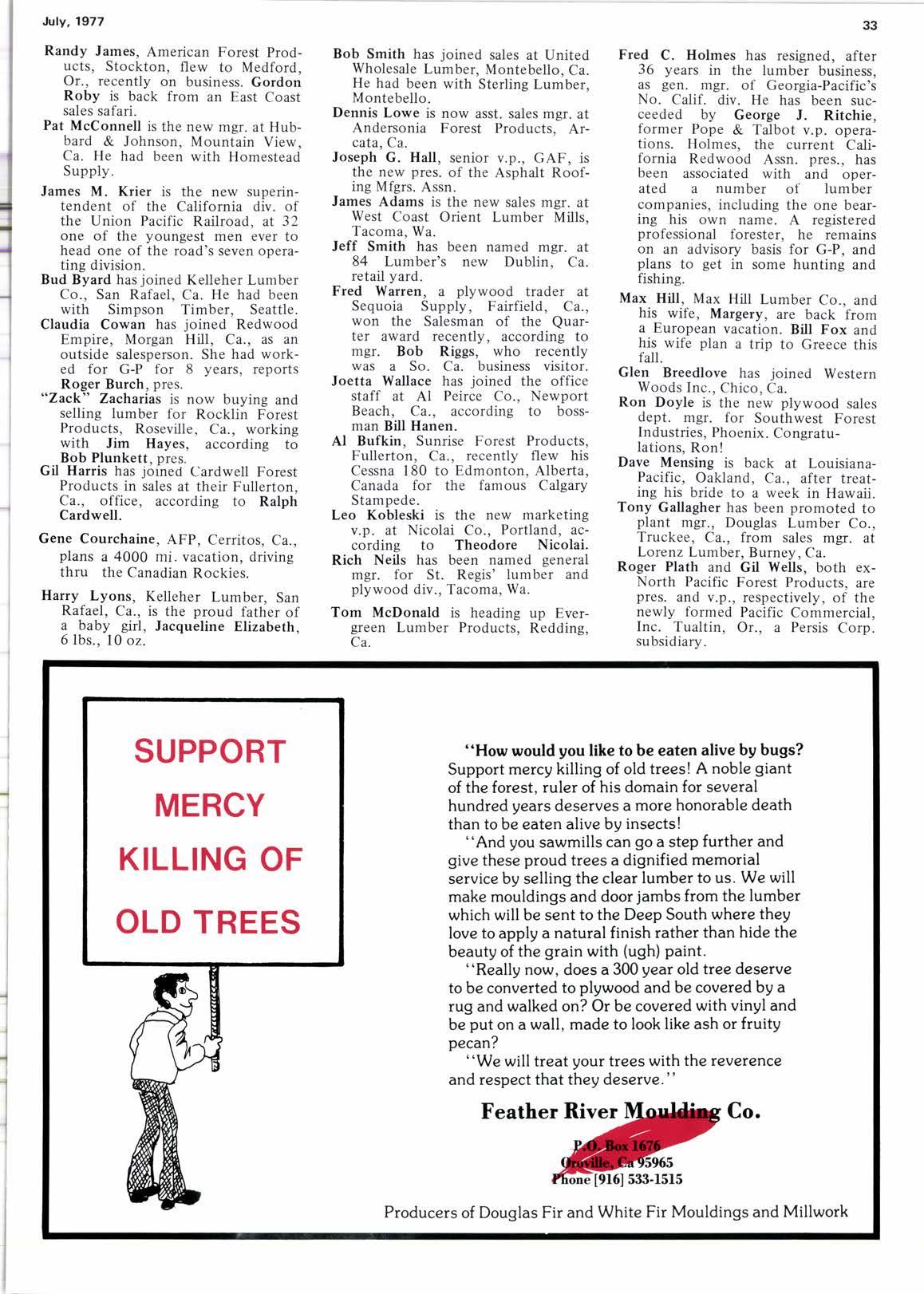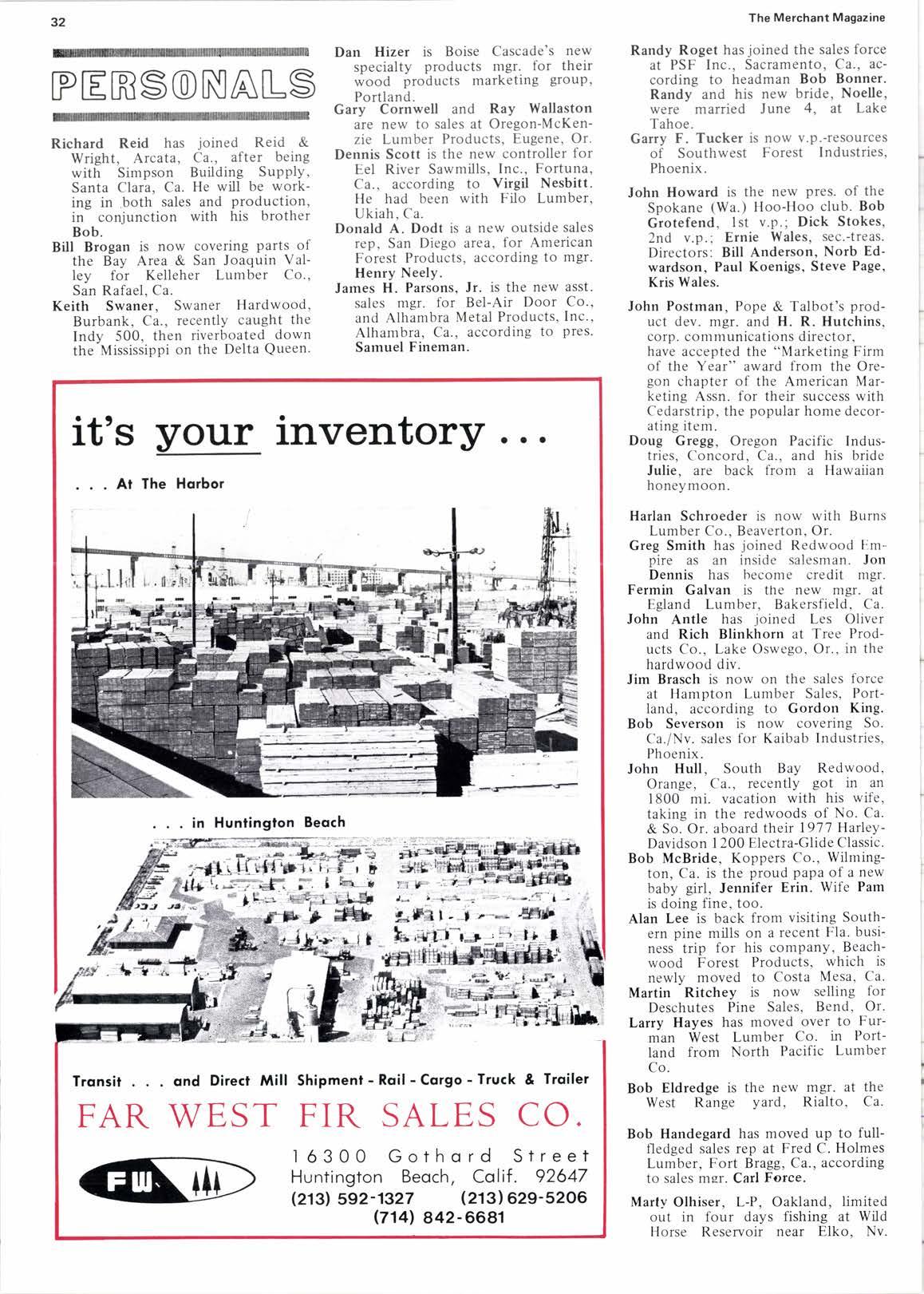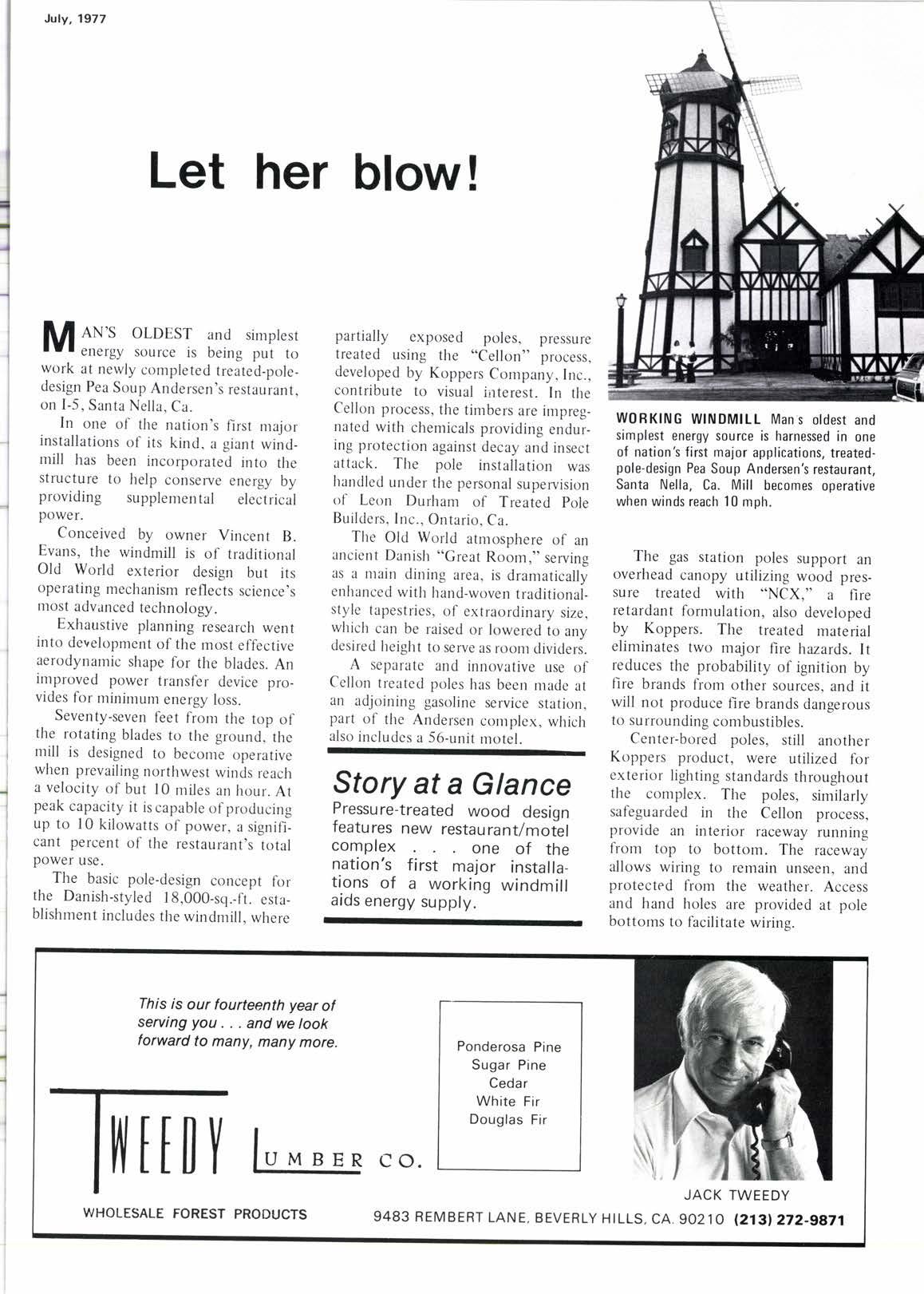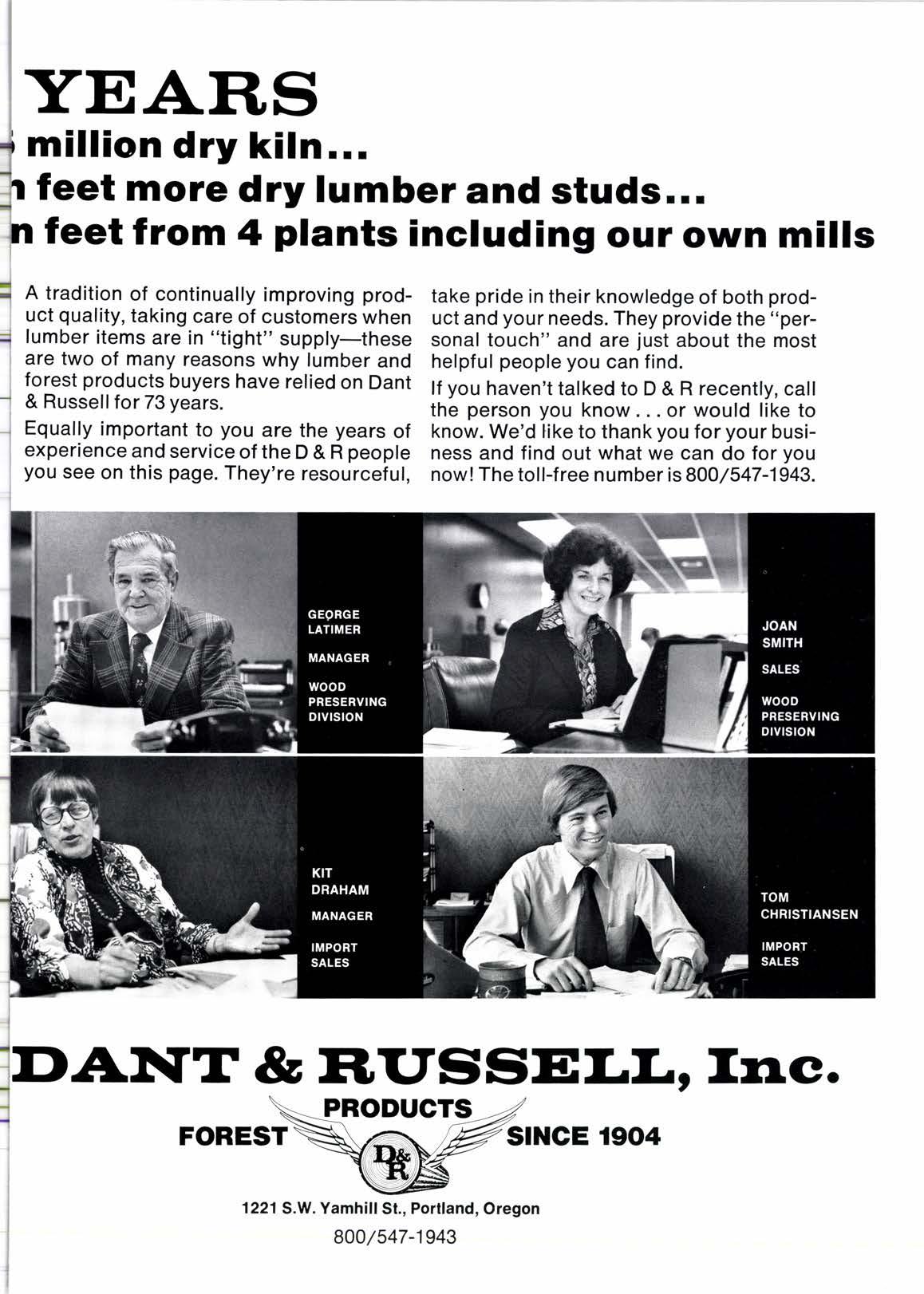
4 minute read
Lift truck masts
By James Smiley and Vern Koelling Industrial Truck Division Allis-Chalmers CorP.
One of the last Phases in the trans portation of materials in our indus}y involves the lift truck, that workhorse at all levels of the lumber and building materials industry. This article gives tips on how to avoid costly downtime due to improper selection, care and operation of a lift truck mast.
I I lSfS on industrial trucks lUl ar" a substantial Part of the vehicles' cost. Thus it is easy to express mast service in terms of investment dollars.
Today's lift truck mast design differs considerably from that of even a decade ago. Engineering advances have improved the mast in several vital ways.
How do you Pick a mast? What are the yardsticks that give direction and create limits?
Lift trucks generally can be grouped, manufacturer notwithstanding, into "families" having certain design characteristics within a range of load caoacities.
The next point of selection is lift heieht. A mast with 6-10 in. more lift than your highest rack or stack height is recommended. Don't forset that the truck has a relatively long life and so you should plan for future needs created bY such as a change in package sizes. warehouse expansion, etc.
You now must make the mast stYle selection, which is dictated by overall lowered and free lift requirements. Check all doorways (plant and transoort vehicles). overhead obstructions tducts, pipind, overhead conveyors' etc.) and determine the maximum lowered height that will allbw free movement about your facility. Find-out the amount of free lift required for your mast. Free lift consists of the amount of fork movement Possible before there is an increase in overall lowered height. This amount is usually critical in double stacking in transport vehicles and working under overhead obstructions. in order to avoid damage.
These three dimensions lift, overall lowered height and free liftwill determine one of the following stvles of mast You could use:
. Two stage, limited free lift, suitable for most lowlift aPplications.
Two stage, high free lift, suitable for lowlift where overhead applications exist. Three s1age, suitable for highlift applications. Four -stage, suitable for highlift applications where overall lowered height is critical.
Carriage width selection is onlY a oroblem when wide flexible material is involved and the forks are required to spread in order to Provide load support. Normally, carriages are selected to match the truck width.
Attachment selection is critical because the added weight and lost load center detract from both the truck and mast capacity. Because attachments add addilional movement, further dynamic loads are imposed on the mast' All attachment movement should be done cautiously, particularly at higher lifts.
Today's mast is designed for long life and good Performance. If it is applied properly and used within confines of-the application, both benefits will result.
(l) A mast cannot be banged and jarred endlessly because shock causes structural damage, bends moving parts and misaligns bearings. If the bearings are properly adjusted, they fit tightly into-the corners of the mast channels. Thus, shock load will be transmitted direcily into the channel down into the axle housing, into the wheels and so to the floor. If there is space due to misalignment, an accelerating force wilj ram tlie bearing into the corner of the channel. Such movement creates a tremendous shock on the bearing, even "dimpling" the channel.
(2) A mast cannot be used as a ram 'or lever because of danger of bending moving Parts and of shock damage to weldments and clearances.
(3I A mast cannot be neglected in terms of operator training because training helps avoidance of problems-
(4) A mast cannot be overlooked in the daily, 50-hour and 100-hour maintenance schedule because bearings must be kePt in Primeadjustmint for smooth operation. If bearinss become offset, theY can jam an en-tire mast mechanism. Dirt, if not removed bY flushing and wiPing, can score fine surfaces, starting a history of pitting and metal erosion.
(5) Masts cannot be overloaded' Overloading is a kind of shock with weldment damage, metal twisting and bearing misalignment accumulating until Ihe condition becomes critical' even irreparable.
(6) A mast cannot be endlesslY subiected to off-center loads, particularlv verv heavv loads. If the stress on the lift ihains is not almost equal, the carriage will be twisted to one side. Thus, link wear will differ and so will torsion effect. Some designs now have side thrust rollers to accommodate off-center loads.
All of these considerations involving masts must be made known to oplrators, maintenance personnel and supervision who must be monitored to make sure they use their knowledge wisely and regularly.
Operators can decrease maintenance downtime and increase total mast life by Practicing some basic techniques:
(
I ) Carry loads in lowered Position. 12" of lift is usually enough to orovide grade and ground clearance' ^
(2) Cirry loads with mast in full back tilt position.
(3) Uie "creeP" sPeed oler railroad tracks or other rough areas'
(4) When ti.lting, lowering and liftini. "feather" off the valve to gradJally decelerate the mast' Abrupt ipeed changes cause high Pressure peaks in the hYdraulic sYstem and imooses shock loads on the chains and bearings.
(5) Use extreme cautlon wnen maiti ut" fully extended - making turns with an elevated load is most critical.
(6) Do not Pick uP loads with one fork, do not Pick uP loads at the tips of the forks, alwaYs have the toaA back against the fork backs'
(7) AlwayJ Pick uP loads centered on the truck.
(8) When using rotating att-achments check clearances so the load can rotate fully without striking the sround or other objects. '
(9) When using side shift attachments. use the shifter with caution' particularly at high lifts. When loadine. use ihe shifter to Place loads juii against walls of trailer or car' Do not oienhift and so Put a side load on the mast.
(10) Do not use the fork tiqs for pushing or oPening box car doors' Watch - for mast Clearance through doors and when working in trailers or cars.
Story at a Glance
How to select and care for the mast on a lift truck . . what operators can do to extend useful life . different kinds of masts . . what to do and not to do when operating the truck.


